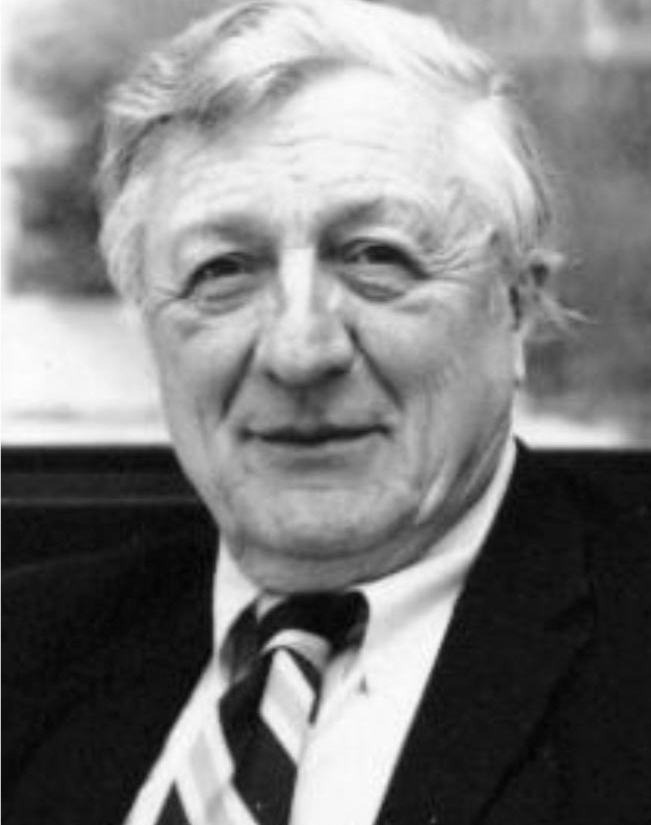Fred David Rosi
DOI: 10.1063/1.1461335
Fred David Rosi, a pioneer and leader in the field of materials science of semiconductors, died on 7 May 2001 in Richmond, Virginia, from complications following a yearlong battle with prostate cancer. He was a professor emeritus in the University of Virginia’s department of materials science.
Fred was born in Meriden, Connecticut, on 13 January 1921, the son of Italian immigrants. He received a BE degree in metallurgy from Yale University in 1942, then served in the US Navy during World War II as an engineering and minesweeping officer in the Pacific. He completed his education at Yale, receiving an ME in metallurgy in 1947, an MS in physics in 1948, and a PhD in metallurgy in 1949. His thesis, carried out under Champion H. Mathewson, concerned the plastic behavior of high-purity aluminum single crystals.
During the 1950s, the revolution in semiconductors had begun, but the science of electronic materials had not really been born yet as a distinct and recognized field. No semiconductor society yet existed, and the few people in the field were mostly metallurgists. Fred had a significant role in the birth of this new science. He was a founder (in 1955) of the electronic materials committee of the American Institute of Metallurgical Engineers, perhaps the first group to focus on electronic materials and to hold annual meetings on the subject. He gave numerous talks to groups in the AIME, and also at universities, government agencies, and industrial laboratories, emphasizing the importance of materials aspects in semiconductors. He also championed the need to form interdisciplinary teams to achieve new and improved devices, a concept that is now widespread.
Fred’s leadership in initiating and guiding research projects was remarkable. In 1953, he joined the RCA Laboratories in Princeton, New Jersey. His group at RCA grew and broadened, influencing a generation of scientists there. His early emphasis on III–V compounds led to a leadership position for the RCA scientists in this field, with key contributions to the materials aspects of gallium arsenide. For example, he led the team that defined many key properties of GaAs, including the discovery in 1958 that silicon impurities were the main donor in GaAs; that discovery had a significant effect on further work in the field. Later work by this group provided the first vapor-phase synthesis of aluminum nitride (AlN), paving the way to the present blue light-emitting diodes.
Following the discovery of the importance of silicon–germanium alloys for thermoelectric devices in 1960 at RCA, Fred initiated, inspired, and guided the interdisciplinary team to develop these alloys from a laboratory curiosity to a practical device. In just four years after he assumed leadership of the Si–Ge development program in 1961, the SNAP-10A system, which used these thermoelectric devices for power generation, was successfully launched. These generators are critical elements that later powered a generation of deep space probes culminating in Voyager I and II (1977).
From 1960 to 1965, when the Si–Ge alloys were being developed, Fred also initiated and led a multi-disciplinary program on superconductors. In 1960, a new chemical vapor deposition system was introduced for the preparation of Nb 3Sn tape; this system was the program’s first success. By 1964, Fred’s team produced the world’s largest superconducting solenoid, with a field of 107 kilogauss over a 1-inch bore. This technology was transferred to an RCA division, which, by 1966, was selling superconducting ribbon. Today such superconducting solenoids dominate nuclear magnetic resonance research tools and are the basis of a major development in medical tomography. In recognition of these achievements, in 1966, Fred was appointed vice president of materials and device research at RCA Laboratories.
In 1975, Fred moved to Richmond, Virginia, to accept the position of general director of R&D for the Reynolds Metals Co. Fred completed his career at the University of Virginia, where he was executive director of the Energy Policies Studies Center and a professor in the department of materials science and engineering until 1995.
Fred also served as consultant to NASA’s Marshall Space Flight Center, the CIA, and several corporations. He was a member of numerous committees, including the National Academy of Science committee on electronic materials and devices and the National Materials Advisory Board. He served as chairman of the Board of Trustees of Trenton State College and on the New Jersey Board of Higher Education. Fred also held 12 issued US patents and, in 1962, received the David Sarnoff Gold Medal for Team Achievement in Science from RCA.
Fred epitomized an industrial research leader: He not only recognized the importance of the research itself, but also emphasized the importance of achieving practical applications. His leadership included the ability to inspire and encourage both those who worked for him and with him. He was loyal and sensitive, and exciting to interact with.
The now flourishing field of materials science has lost an outstanding leader, pioneer, and innovator. For all of us who worked or interacted with Fred, his charisma, enthusiasm, intelligence, and personal kindness will not be forgotten.


More about the Authors
Leonard R. Weisberg. 1Alexandria, Virginia, US .
George D. Cody. 2Princeton, New Jersey, US .
